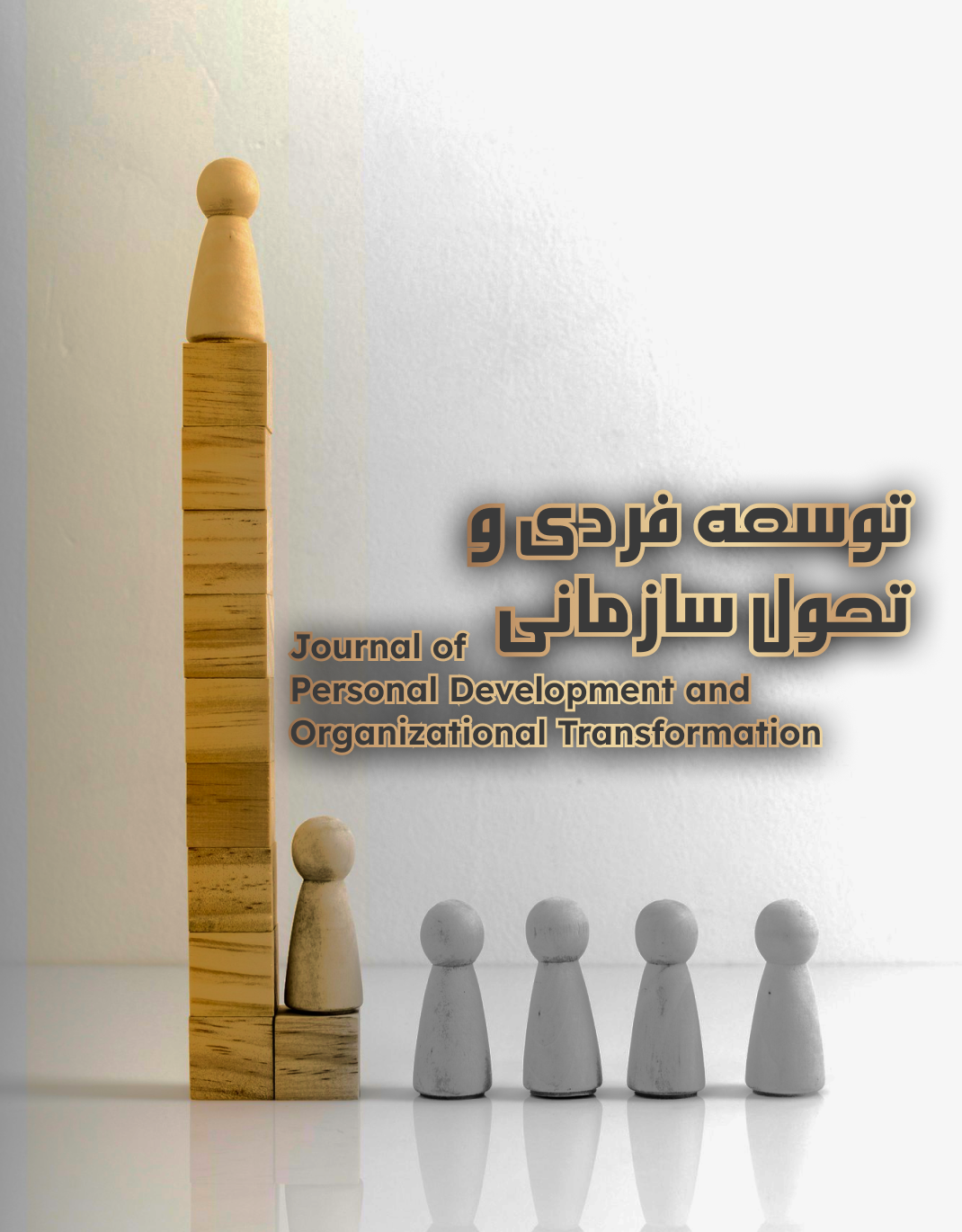Re-examining the Nature of Educational Leadership in the Complexity Paradigm with Reference to the Core Elements of Technical and Vocational Schools Based on the Fundamental Transformation Document of Education and Its Subsystems
Keywords:
The nature of leadership, Fundamental transformation, Technical and vocational schools, EducationAbstract
Given the importance of complexity theory and its application within the educational system, the primary aim of this study is to conceptualize the core elements of technical and vocational high schools from the perspective of the Fundamental Transformation Document of Education and its subsystems, in accordance with the components of the complexity paradigm. To achieve the research objectives, expert interviews and the Delphi method were employed in the qualitative phase, while the Analytic Hierarchy Process (AHP) was used in the quantitative phase. The statistical population consisted of experts in the field of technical and vocational education, from which 14 individuals were selected for interviews using the snowball sampling method. After consulting with experts and refining the insights, it was determined that the framework of educational leadership in the complexity paradigm within technical and vocational schools comprises 7 components and 41 subcomponents. The main components include: teacher, content, learning environment, teaching-learning, macro-environment, management, and evaluation. Based on the AHP results, the teacher, with a score of 0.242, was identified as the most critical component of the curriculum from the standpoint of complexity theory. Following the teacher, the next priorities were macro-environment (0.225), content (0.149), teaching-learning (0.125), learning environment (0.116), management (0.092), and evaluation (0.051). Furthermore, a comparison between the Fundamental Transformation Document and the model derived from this study indicated that although the goals presented in the Fundamental Transformation Document do not entirely align with the components and definitions of complexity theory, they do show a high level of correspondence in many dimensions. Finally, based on the findings of the study, several recommendations were proposed.
Downloads
References
Ahanchian, M. R., & Mohammadi, C. (2013). Lessons from Chaos Theory in Iran's Science Education Curriculum System. Curriculum Studies Quarterly(29), 5-26. https://elmnet.ir/doc/845536-29852
Alvani, S. M. (2009). Public Management. Ney Publishing.
Bertuglia, C. S., & Vaio, F. (2005). Nonlinearity, Chaos and Complexity: The Dynamics of Natural and Social Systems. Oxford University Press. https://doi.org/10.1093/oso/9780198567905.001.0001
Byrne, D. (1999). Complexity Theory and the Social Sciences. London and New York. https://www.taylorfrancis.com/books/mono/10.4324/9780203003916/complexity-theory-social-sciences-david-byrne
Cilliers, P. (1998). Complexity and Postmodernism: Understanding Complex Systems. Routledge. https://books.google.nl/books/about/Complexity_and_Postmodernism.html?id=HnEx6FaO0MQC&redir_esc=y
Dalmedico, D. A. (2004). Chaos, Disorder, and Mixing: A New Fin-de-Siècle Image of Science? Growing Explanations: Historical Perspectives on Recent Science. Duke University Press. https://doi.org/10.2307/j.ctv11hpm7f.5
Danaee Fard, H. (2006). An Inquiry into the Philosophical Foundations of Complexity Theory: Does Complexity Science Have a Postmodernist Nature? Human Sciences Modares, Special Issue on Management, 171-210. https://www.magiran.com/paper/410177/a-study-about-philosophical-foundations-of-complexity-theory-is-complexity-science-a-postmodern-theory?lang=en
Deborah, P. B. (2005). Complexity, Chaos, and Nonlinear Dynamics: A New Perspective on Career Development Theory. The Career Development Quarterly, 53, 194-207. https://doi.org/10.1002/j.2161-0045.2005.tb00990.x
Frei, R. (2011). A Complex Systems Approach to Education in Switzerland. https://pdfs.semanticscholar.org/bb52/8c548d20c0a103c8d96fc999cd2570cdb782.pdf
Gros, C. (2010). Complex and Adaptive Dynamical Systems. Springer. https://doi.org/10.1007/978-3-642-04706-0
Morrison, K. (2003). Complexity Theory and Curriculum Reforms in Hong Kong. Pedagogy, Culture and Society, 11(2), 279-302. https://doi.org/10.1080/14681360300200174
Parliament Research Center of the Islamic Republic of Iran. (2022). Pathology of Technical and Vocational Education in the Second Cycle of Secondary Education (Technical and Vocational Schools and Skill-Training Schools) and Proposed Corrective Strategies. https://report.mrc.ir/article_9316.html
Ravi, V., Pradeepkumar, D., & Deb, K. (2017). Financial time series prediction using hybrids of chaos theory, multi-layer perceptron and multi-objective evolutionary algorithms. Swarm and Evolutionary Computation, 36, 136-149. https://doi.org/10.1016/j.swevo.2017.05.003
Sharifzadeh, F., & Nagavi Hosseini, S. A. (2020). Exploring the Evolution of Public Policy Schools: From Traditional Schools to the Chaos Theory School. Politics Quarterly, Journal of the Faculty of Law and Political Science, 50(3).
Supreme Council of Education. (2012). National Curriculum of the Islamic Republic of Iran.
Wood, P., & Butt, G. (2014). Exploring the Use of Complexity Theory and Action Research as Frameworks for Curriculum Change. Journal of Curriculum Studies, 46(5). https://doi.org/10.1080/00220272.2014.921840
Downloads
Published
Submitted
Revised
Accepted
Issue
Section
License
Copyright (c) 2025 Amin Ollah Omidvandchali (Author); Samira Pali; Seyedeh Khadijeh Moafimadani (Author)

This work is licensed under a Creative Commons Attribution-NonCommercial 4.0 International License.







